No products in the cart.
NEWS
Grow Your Own Harvest: The Best Fruit Trees for Rooftop Gardening
In today’s urban landscapes, where green space is often limited, many plant enthusiasts are discovering the joy and practicality of growing their own rooftop fruit trees. This trend isn’t just about aesthetics; it’s a rewarding way to access fresh, clean produce right from home. Especially recently, rooftop fruit gardening has surged in popularity due to the numerous benefits it offers. As a specialist in agriculture and a content creator for Biogarden.asia, I’m excited to share ideas for fruit trees that thrive in pots on your rooftop, transforming unused space into a productive and beautiful oasis.
The Many Benefits of Cultivating Rooftop Fruit Trees
Growing fruit trees on your rooftop provides a wealth of advantages, touching various aspects of urban living. It’s no wonder this practice is gaining traction among city dwellers. Let’s explore some of the key benefits of establishing a rooftop orchard.
Firstly, cultivating fruit trees on your rooftop can offer significant economic benefits. For those living in urban areas with smaller properties, utilizing rooftop space for gardening provides a valuable source of fresh, healthy fruit, reducing grocery bills. By growing your own, you ensure the produce is clean and free from unwanted chemicals, promoting better health for your family.
Secondly, tending to fruit trees on your rooftop brings you closer to nature. The process of planting, watering, and caring for your trees offers a relaxing escape from the stresses of city life. Spending time in your rooftop garden provides fresh air and a serene environment. Additionally, the canopy of fruit trees helps shade the rooftop, reducing the direct heat from the sun and keeping your home cooler.
Thirdly, growing green plants, including fruit trees, plays a crucial role in mitigating environmental impact. Trees absorb CO2 from the atmosphere, contributing to cleaner air. On hot days, they help lower the ambient temperature, making the microclimate around your home more comfortable. Imagine the cumulative effect if every rooftop hosted a few fruit-bearing trees – a significant reduction in urban pollution and heat.
15 Highly Productive Fruit Tree Ideas for Your Rooftop
Many fruit tree varieties are well-suited for container gardening on rooftops, offering both aesthetic appeal and abundant harvests. Here are 15 suggestions for easy-to-care-for, high-yielding fruit trees perfect for your urban rooftop garden. Consider adding some of these to diversify your elevated green space.
Guava
Guava is a familiar and favored fruit tree for home gardens and rooftops. Its naturally compact growth habit, coupled with its robustness and ease of care, makes it an excellent candidate for container planting. Simple pruning and consistent watering are usually all that’s needed for a thriving guava tree.
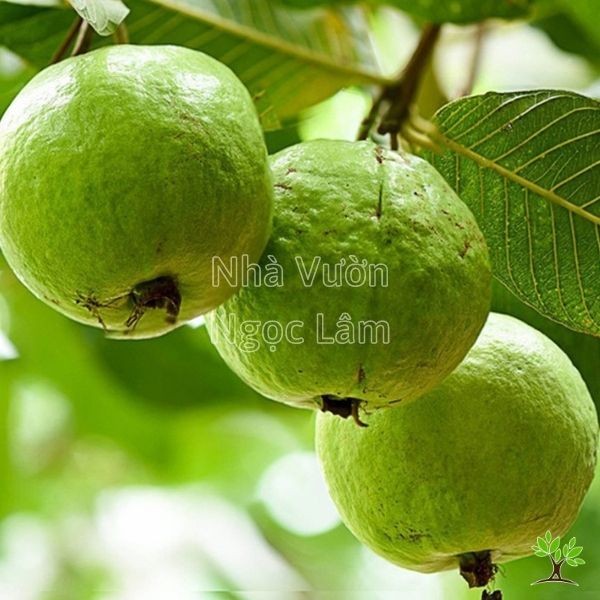 Ripe guava fruit hanging from a branch on a rooftop tree
Ripe guava fruit hanging from a branch on a rooftop tree
Every part of the guava tree, from its leaves to its fruit, can be utilized. The fruit itself is delicious and packed with nutrients, offering numerous health benefits. Rich in vitamins A and C, zinc, potassium, and other minerals, guavas boost the immune system, promote skin health, and possess anti-aging properties. Guava trees don’t require extensive space, making them ideal for saving room on your rooftop. They beautify your space while providing a bounty of fresh fruit.
Red Pomegranate
The red pomegranate is a beautiful and productive fruit tree perfectly suited for rooftop cultivation. Its vibrant red fruit makes it an attractive choice for ornamental planting on balconies or rooftops, and it doesn’t demand excessive space.
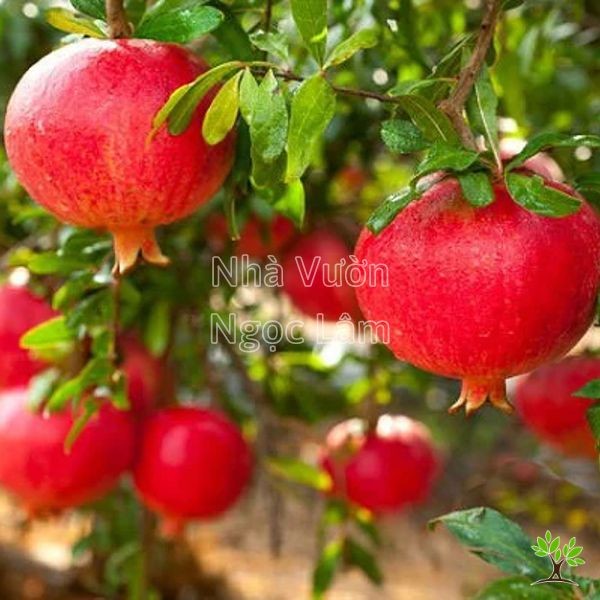 Close-up of large red pomegranate fruit on a branch
Close-up of large red pomegranate fruit on a branch
Red pomegranate is remarkably easy to plant and care for. It’s known for its high yield of both attractive flowers and plentiful fruit. Furthermore, pomegranate trees are considered to bring good Feng Shui, symbolizing prosperity and good fortune for the household.
Acerola Cherry
The Acerola cherry is a popular choice for rooftop gardens and is highly favored by urban gardeners. Thriving in tropical climates, it adapts readily to various soil types. However, it significantly benefits from ample sunlight, which encourages abundant fruit production.
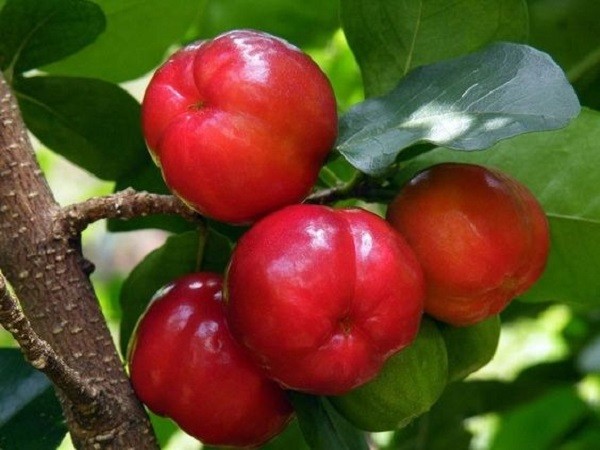 Cluster of small red acerola cherries on a leafy branch
Cluster of small red acerola cherries on a leafy branch
Its adaptability to sunny conditions makes the rooftop environment ideal for the Acerola cherry’s growth. The fruit offers a pleasant sweet and sour taste and is incredibly rich in vitamins, particularly vitamin C. Growing this fruit tree can provide a continuous harvest throughout the year, as it readily sets fruit. Planted in pots, it also offers pleasant shade, contributing to a cooler rooftop garden.
Starfruit
Starfruit is a familiar fruit tree, especially for those with rural roots. If you appreciate a touch of rustic charm and familiarity, starfruit is a rooftop fruit tree you shouldn’t overlook. Starfruit trees generally don’t require vast amounts of space on the rooftop, allowing you to plant them alongside other fruit varieties.
 Yellow starfruit hanging from a tree branch
Yellow starfruit hanging from a tree branch
Starfruit trees tolerate a wide range of temperatures, making them very suitable for rooftop environments without much concern about adaptation. With their lush green canopy, prolific fruiting, and beautiful clusters of flowers, there’s every reason to try growing starfruit to add unique character to your rooftop garden.
Kiwi
Recently, the kiwi fruit has become increasingly popular, cherished for its delicious taste and nutritional value. Kiwi vines are even recognized as one of the world’s top 10 most delicious and safest fruits. More and more urban gardeners are experimenting with growing and harvesting their own kiwi.
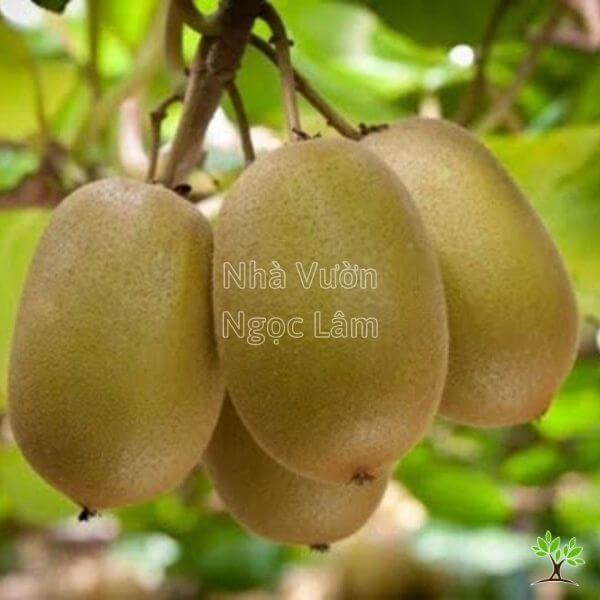 Fuzzy brown kiwi fruit growing on a vine
Fuzzy brown kiwi fruit growing on a vine
Kiwi fruit is exceptionally high in vitamin C, offering significant health benefits. The minerals present in kiwi, such as potassium and antioxidants, are also highly beneficial for our well-being. Kiwi vines are well-suited to tropical climates, are easy to grow, and relatively easy to care for, making them a viable option for rooftop cultivation.
Papaya
Papaya is another fruit tree that is easy to grow and maintain. It can be successfully planted in containers on your rooftop without taking up too much space. Choosing dwarf varieties can further optimize space and make harvesting more convenient on a rooftop.
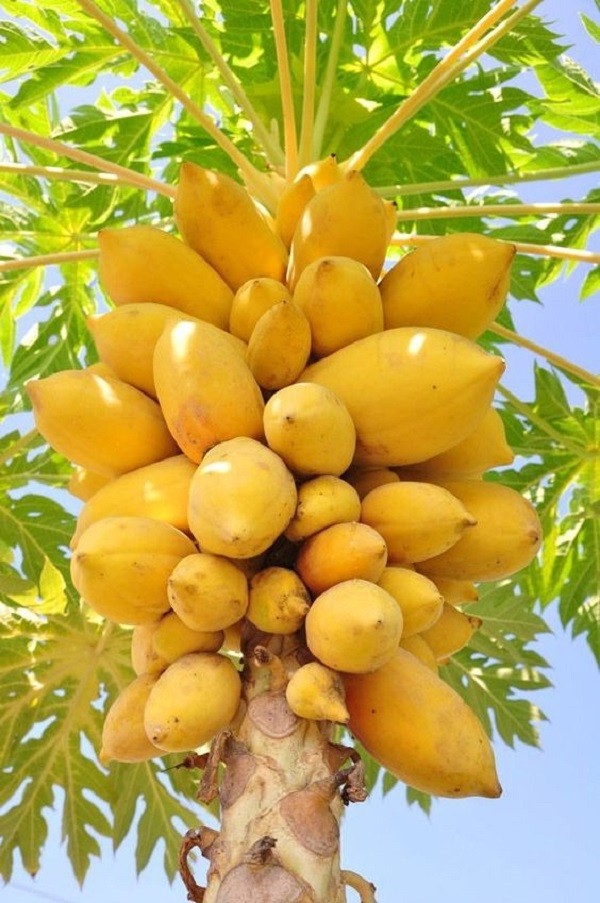 Ripe orange papaya fruit growing on a tree trunk
Ripe orange papaya fruit growing on a tree trunk
Papaya trees are generally less prone to pests and diseases and can withstand hot weather. The initial investment for growing papaya is relatively low, making it worthwhile to try. Papaya offers numerous benefits, with various parts of the plant being usable. The fruit is sweet, fragrant, and highly nutritious.
Passion Fruit
Among the fruit varieties suitable for rooftop gardening, passion fruit is another not to be missed. You can easily create a trellis system, either horizontal or vertical, for the vine to climb. Passion fruit can grow in various soil types. During cultivation, ensure regular watering and prune branches and leaves frequently to prevent the vine from becoming overgrown.
 Purple passion fruit hanging from a vine
Purple passion fruit hanging from a vine
Passion fruit is rich in minerals, vitamins, and fiber, all highly beneficial for health. This vine grows and develops well in the sunny conditions often found on rooftops. Furthermore, passion fruit vines have a relatively long lifespan, allowing for continuous harvests over multiple seasons.
Jujube (Vietnamese Jujube)
Jujube trees are quite familiar fruit trees for many households, prized for their high nutritional value. Jujube fruit boasts an exceptionally high vitamin C content, sometimes 7-10 times more than citrus fruits like oranges or grapefruits. Moreover, jujubes are delicious and widely enjoyed.
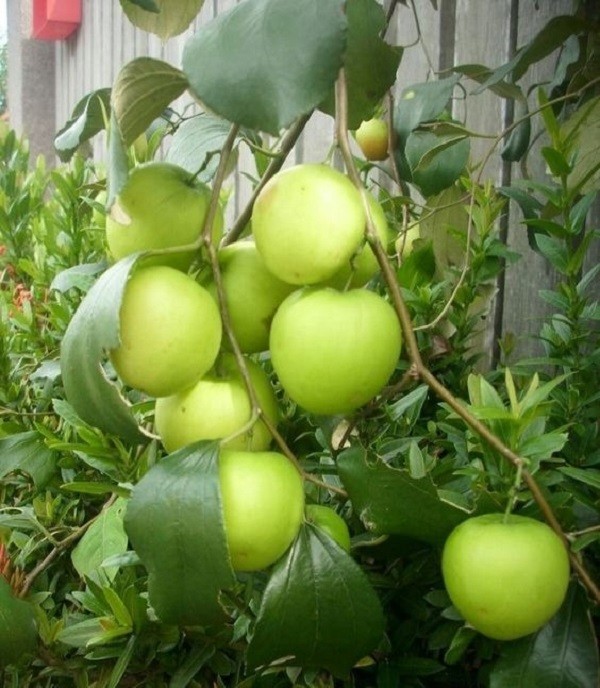 Cluster of small green and red jujube fruits on a branch
Cluster of small green and red jujube fruits on a branch
Jujube trees are relatively easy to grow and adapt well to various climate conditions. Therefore, planting jujube on a rooftop is an excellent solution for utilizing limited space. You’ll gain a significant source of clean, fresh fruit for your whole family to enjoy.
American Fig
The American Fig is a fruit tree variety gaining popularity and is increasingly being cultivated. This imported fruit boasts high nutritional value. Each American fig fruit can be quite large, weighing up to 200 grams, with a delicately sweet flavor and rich, jammy pulp.
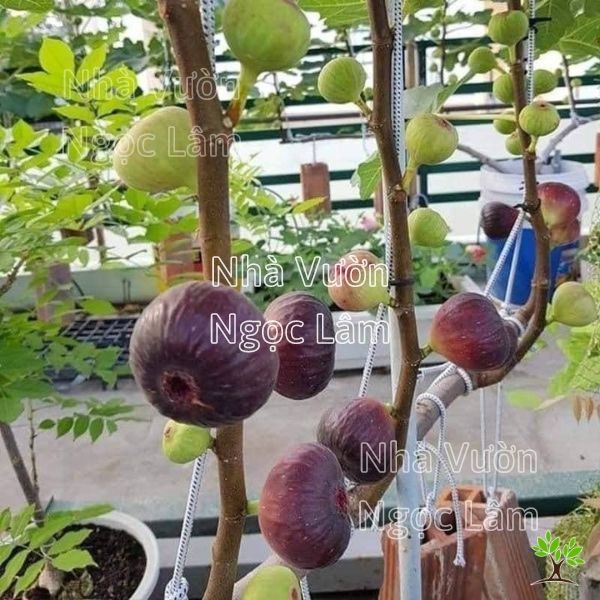 Large purple American fig fruit growing on a branch
Large purple American fig fruit growing on a branch
American fig trees are easy to grow and require minimal care. Dwarf varieties, typically 50cm to 1.5m tall, are particularly well-suited for rooftop planting. They also adapt to various climates and fruit relatively quickly, often within 6-8 months. American figs usually yield fruit year-round with consistent high quality. The fruit contains nutrients beneficial for preventing diseases such as cancer, heart disease, degeneration, and high blood pressure. Additionally, fig trees are believed to carry Feng Shui significance, representing prosperity, luck, and abundance for the homeowner and family.
Mango
Mango is a fruit tree variety familiar to almost everyone. Many different mango varieties exist, including ‘Cat’, ‘Tu Quy’, Thai, and Taiwanese mangoes, among others. Each type offers its own unique, delicious flavor, so you can choose seedlings based on your personal preference and that of your family members for your rooftop garden.
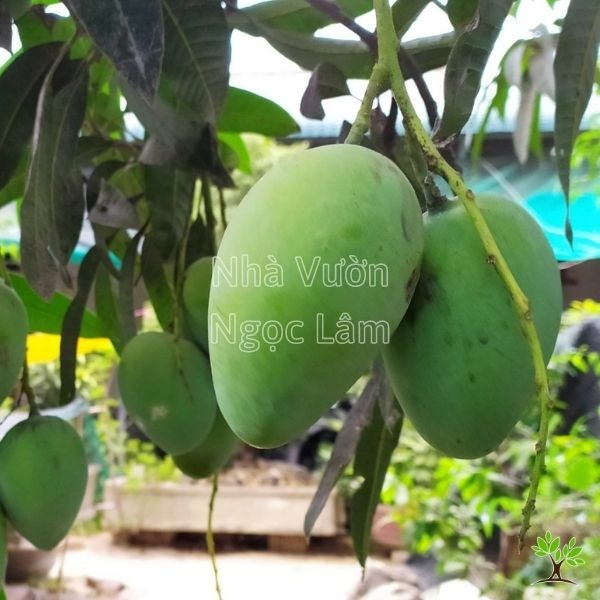 Green mango fruit hanging from a tree
Green mango fruit hanging from a tree
Mango trees can provide valuable shade and yield extremely tasty fruit. Furthermore, mango trees are not particular about soil type, are easy to care for, and require minimal maintenance costs. They represent a perfect choice for your rooftop space.
Strawberry
Strawberries are a beloved fruit, widely grown on rooftops. They are extremely popular due to their high nutritional content and delicious taste. While strawberries are a rooftop fruit crop, they prefer humid conditions. Therefore, when growing strawberries on your rooftop, choose a cooler spot and water them regularly.
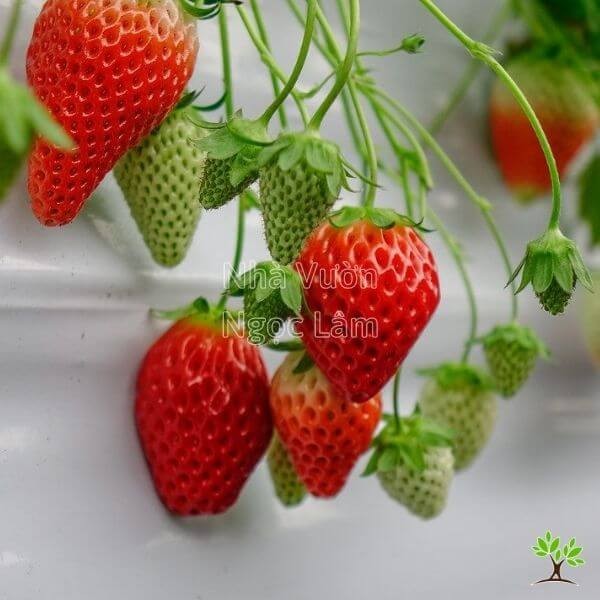 Bright red strawberries growing among leaves
Bright red strawberries growing among leaves
Strawberries offer numerous health benefits, including fighting asthma, promoting cardiovascular health, and possessing potential anti-cancer properties. Your family will have a constant supply of clean strawberries to enjoy regularly.
Thai Jackfruit
Thai jackfruit is one of the rooftop fruit tree varieties known for its fragrant, sweet, and nutritious fruit. It is increasingly considered for widespread cultivation on urban rooftops. Thai jackfruit typically produces large, very sweet fruits. You can select different jackfruit varieties based on your personal preferences and those of your family members.
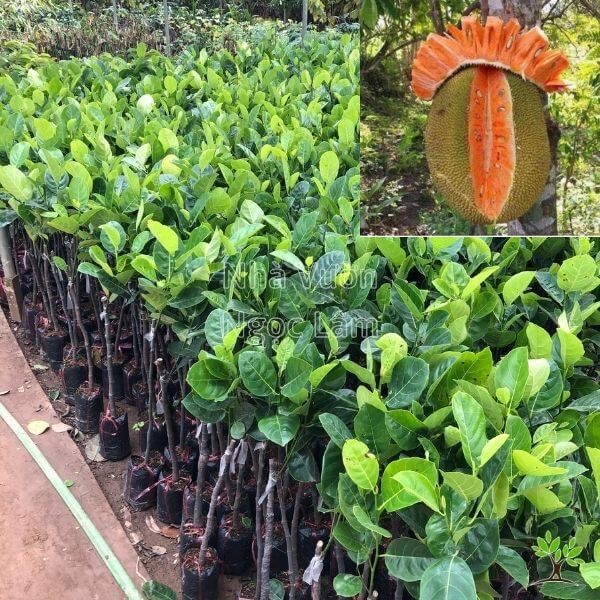 Large green jackfruit hanging from a tree trunk
Large green jackfruit hanging from a tree trunk
Green Skin Pomelo
The green skin pomelo is another fruit tree favored by many families due to its various advantages. Although this variety takes a relatively long time to bear fruit, many households still choose to grow it in their rooftop space for its delicious produce.
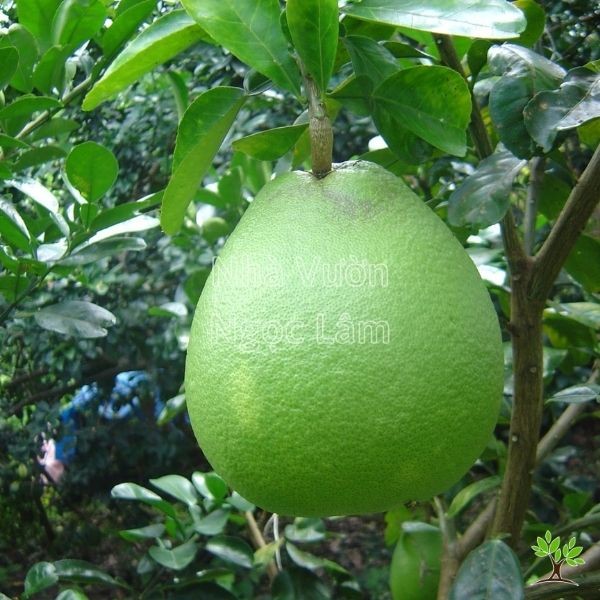 Round green pomelo fruit on a branch
Round green pomelo fruit on a branch
With advancements in horticultural techniques, green skin pomelos can now be successfully grown in containers. These potted trees can exhibit strong growth and development, and the time required for flowering and fruiting can potentially be shortened.
Thai Hog Plum
Another worthwhile fruit tree to cultivate is the Thai hog plum. This is an easy-to-grow and easy-to-care-for fruit tree that also offers a very high yield. It doesn’t require a large planting area, so you can easily dedicate a corner of your rooftop to growing hog plums.
 Cluster of small green hog plums on a branch
Cluster of small green hog plums on a branch
Hog plum trees are adaptable to various soil environments and climate conditions. They contribute to making your home space greener and diversifying your plant collection. Your family will have a bountiful supply of fruit year-round, as hog plums can fruit continuously.
Kumquat
You’ll often see kumquat trees displayed in homes during the Tet holiday (Lunar New Year). Afterward, you can plant them on your rooftop to harvest fruit regularly. Kumquats can be used for various purposes and are also considered to bring luck and prosperity to the homeowner.
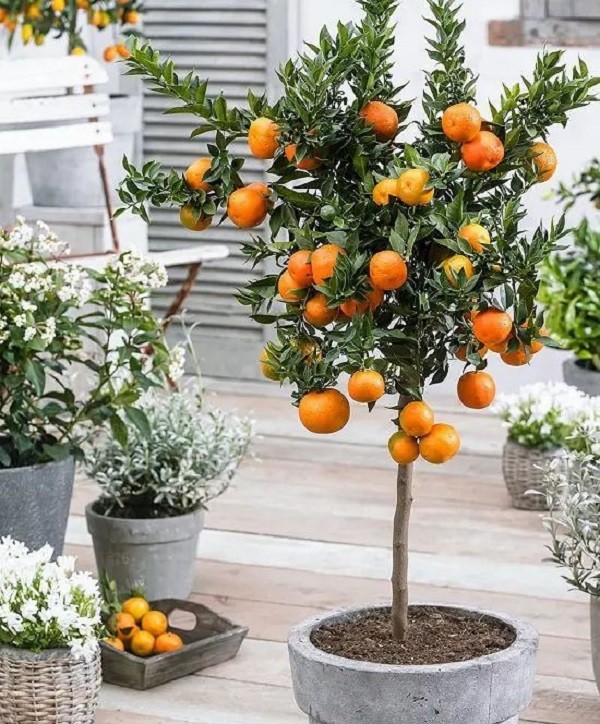 Small orange kumquat fruits on a leafy branch
Small orange kumquat fruits on a leafy branch
Essential Techniques for Successful Rooftop Fruit Tree Cultivation
To help you grow your fruit trees correctly, let’s share some techniques for rooftop planting. Proper techniques ensure your trees yield more fruit and your small garden flourishes.
Preparation
Planting Soil: Fruit trees grown on rooftops generally thrive in well-draining, fertile soil. While specific mixes like “bazan soil” or “vinatap” mixed with ingredients like ash, husk, and manure are used, the key is to create a blend that is loose, well-aerated, and nutrient-rich to support healthy growth and maximize yield. A common principle is mixing a base soil with organic matter and amendments for drainage.
Containers: Pots with sufficient depth and width (ideally 30cm or more) are best suited for growing fruit trees on a rooftop. You can choose various shapes like round, hexagonal, or modular pots, depending on your space and aesthetic preference. The container size should be appropriate for the seedling’s current root ball, allowing room for future growth. Ensure all containers have adequate drainage holes to prevent waterlogging.
Planting Process
Soil Preparation: Enhance the soil’s looseness and nutrient content by preparing your potting mix. If using a base like “vinatap,” mix it with components like burned rice husk and compost/manure. Incorporate organic fertilizer into the mix before planting to provide initial nutrients.
Planting the Tree: Gently remove the seedling from its nursery bag, being careful not to damage the roots. Place the seedling in the prepared container with the enriched soil. Fill the pot with soil, gently firming it around the roots to remove air pockets and stabilize the plant. Water thoroughly after planting. For taller or less stable young trees, you might need to use a stake to provide support until the root system is established.
Rooftop Fruit Tree Care Techniques
Here are some care techniques to help your fruit trees grow and develop fully on your rooftop:
Watering: The frequency of watering depends on the specific tree type and weather conditions. Ensure the soil remains consistently moist but not waterlogged. Rooftops can get very hot and dry, so frequent watering is often necessary, but it’s crucial to check that the container drains well to avoid root rot. Observe your plant and the soil moisture levels to determine watering needs.
Fertilization: Fertilizing at different stages is key to healthy growth and fruiting. Initially, use a balanced fertilizer to help the young tree establish. During periods of vegetative growth, a fertilizer higher in nitrogen can be beneficial. As the tree prepares to flower and fruit, switch to a fertilizer that promotes blooming and fruit development, typically higher in phosphorus and potassium. Supplementing with organic fertilizers can further enhance soil health and fruit quality. Tailor the specific fertilizer type and application rate to the needs of each fruit variety.
Pest and Disease Management: When growing edible fruit on a rooftop, it’s best to avoid using harsh chemical pesticides and fungicides. Explore natural and organic pest control methods to protect your harvest from harmful residues and ensure your family’s health. Regularly inspect your trees for signs of pests or diseases and address issues promptly using eco-friendly solutions.
Maintaining the Growing Environment: Keep your rooftop garden clean and tidy. Regularly remove fallen leaves, weeds, and debris from around the base of the plants and the general area. This practice helps prevent the buildup of moisture and organic matter that can harbor pests and diseases. A clean environment promotes healthier plants and reduces the need for interventions.
Biogarden.asia has shared a list of 15 fruit trees suitable for rooftop gardening, along with detailed planting and care techniques. We hope this useful information inspires you with ideas to make your rooftop garden unique and abundant. Ready to start your rooftop orchard? Explore our selection and find everything you need for success at Biogarden.asia.



